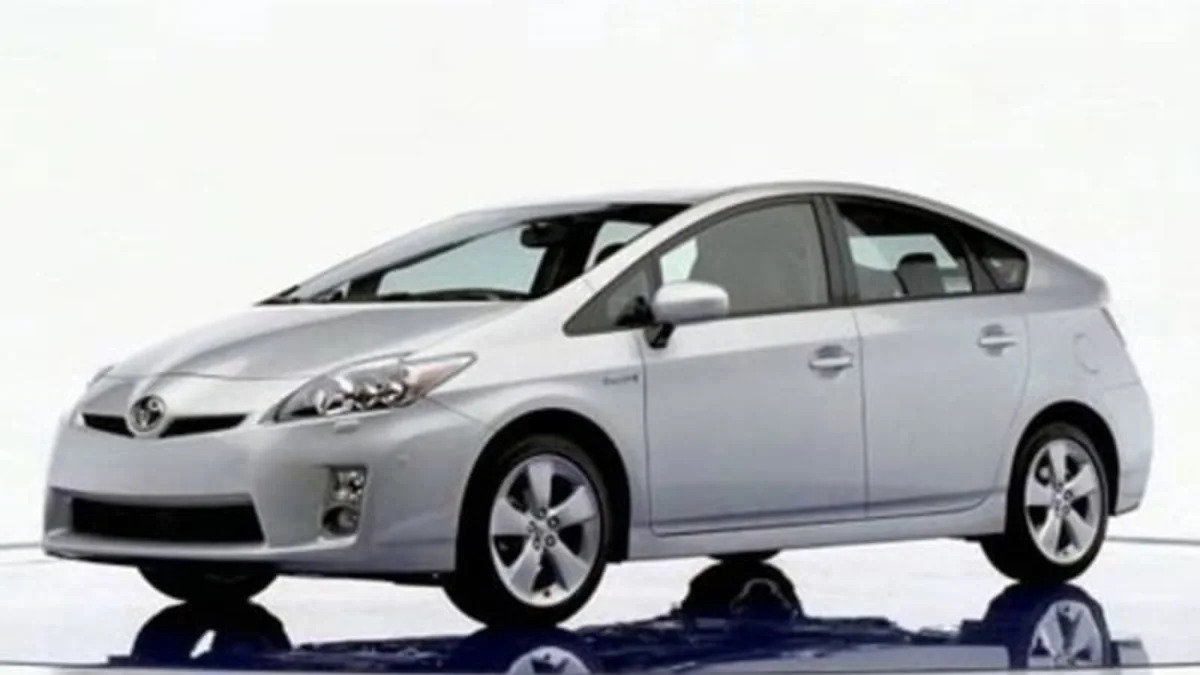Click for a gallery of the 2010 Prius
When the new Prius debuts next month at the Detroit Auto Show, its interior will feature significant use of so-called "ecological plastics." These are polymer materials derived from biomass oils rather than petroleum. Toyota had its first application of bioplastics in the Japanese market Raum in 2003. Ford began using such materials in 2007 when items like soy-foam seat cushions appeared first in the Mustang and then the Escape. Toyota plans to use bioplastics for headliners, rocker panel scuff plates, as well as the seats. Toyota hopes to use the new materials for up to 60 percent of the plastic components within vehicles like the Prius and the new Lexus HS250h by the end of 2009.
[Source: Toyota]
December 17, 2008
Toyota to Increase 'Ecological Plastic' in Vehicle Interiors
Tokyo - TOYOTA MOTOR CORPORATION (TMC) announces plans to increase use of plant-derived, carbon-neutral* plastics in more vehicle models, starting with a new hybrid vehicle next year. The TMC newly developed plastics, collectively known as "Ecological Plastic", are to be used in scuff plates, headliners, seat cushions and other interior vehicle parts. Within 2009, TMC aims for Ecological Plastic to account for approximately 60 percent of the interior components in vehicles that feature it.
There are basically two types of Ecological Plastic-that produced completely from plant-derived materials and that produced from a combination of plant- and petroleum-derived materials. Because plants play a role in either type, Ecological Plastic emits less CO2 during a product's lifecycle (from manufacture to disposal) than plastic made solely from petroleum; it also helps reduce petroleum use.
Ecological Plastic adequately meets the heat-resistance and shock-resistance demands of vehicle interiors through the use of various compounding technologies, such as those allowing molecular-level bonding and homogeneous mixing of plant-derived and petroleum-derived raw materials. And being equal to conventional plastics in terms of quality and productivity means that it can be used in production vehicles.
TMC continues to develop various advanced technologies aimed at realizing sustainable mobility and believes that it is important to increase the availability of such technologies in the marketplace. As such, TMC became the first automaker in the world to use 100-percent plant-based plastics in production-vehicle interior parts when it launched the Japanese-market "Raum" in May 2003, featuring Ecological Plastic that used polylactic acid and other all-plant-based materials. TMC intends to pursue research and development and practical application that result in expanded use of Ecological Plastic in vehicle parts.
*Zero net CO2 emissions over an entire product lifecycle
Reference: Ecological Plastic Application and Materials Used
| Interior vehicle parts using Ecological Plastic |
Where used | Combined raw materials | |
| Plant-derived | Petroleum-derived | ||
| Scuff plates, cowl side trim, floor finish plate, toolbox |
Throughout | Polylactic acid | Polypropylene |
| Headliner, sun visors, pillar covers |
Covering (fibrous portion) |
Plant-derived polyester | Polyethylene terephthalate |
| Trunk liner | Covering (fibrous portion) |
Polylactic acid | Polyethylene terephthalate |
| Door trim | Base material | Kenaf fiber* and Polylactic acid |
(Not used) |
| Seat cushion | Foam portion | Polyol derived from castor oil* |
Polyol, isocyanate (cross-linking agent) |


Sign in to post
Please sign in to leave a comment.
Continue